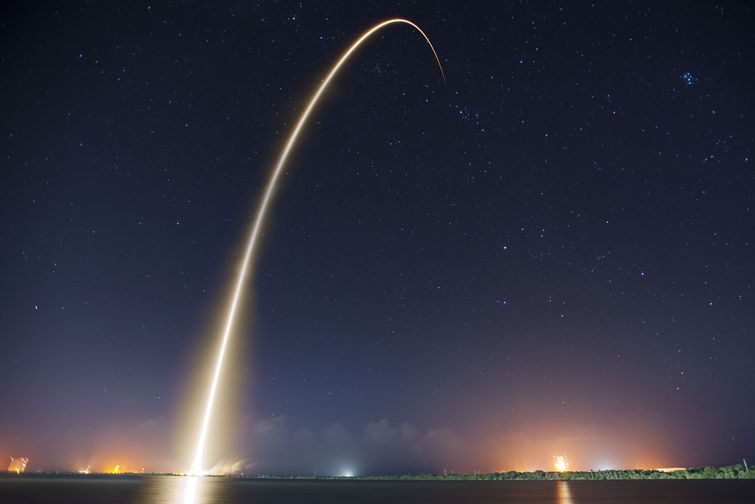 Saturday morning, SpaceX launched its fifth cargo resupply mission to the International Space Station, part of a collaboration with NASA.
Saturday morning, SpaceX launched its fifth cargo resupply mission to the International Space Station, part of a collaboration with NASA.
But this time SpaceX, nearly did something unprecedented afterward: the first stage of its Falcon 9 rocket landed vertically on a platform floating in the Atlantic Ocean a few minutes after its job was finished. However, the rocket touched down too hard because it ran out of hydraulic fluid, and was damaged in the process:
Rocket made it to drone spaceport ship, but landed hard. Close, but no cigar this time. Bodes well for the future tho.— Elon Musk (@elonmusk) January 10, 2015
Didn't get good landing/impact video. Pitch dark and foggy. Will piece it together from telemetry and ... actual pieces.
— Elon Musk (@elonmusk) January 10, 2015
Normally, rockets are simply allowed to break up into pieces or sink in the ocean after each use. A controlled landing of the rocket could have allowed SpaceX to reuse it on a future flight — and reusing this multi-million dollar piece of equipment, rather than throwing it out after every flight, could dramatically drive down the cost of space travel.
/cdn0.vox-cdn.com/uploads/chorus_asset/file/2921912/_80169758_80169757.0.jpg)
The landing platform, which was damaged during the hard landing. (SpaceX)
But even if the rough landing destroyed the rocket, just placing it accurately on the platform was a big step in the right direction. The company admitted this was a difficult maneuver with a high chance of failure beforehand, and it's expected they'll keep trying in future launches.
What SpaceX was trying to do
The company launched a Falcon 9 rocket from Cape Canaveral, Florida, in order to carry an uncrewed space capsule up to the International Space Station. The Dragon capsule will deliver all sorts of cargo to the ISS — food, life support equipment, and several scientific experiments — when it arrives there on Monday.
The rocket that launched the capsule into space is made up of two parts: a 138-foot-tall first stage, which burned for the first few minutes of flight, lifting the craft up to an altitude of about 50 miles before separating and falling back to Earth, and a smaller, 49-foot-tall second stage, which burned for another five minutes or so, carrying the spacecraft into orbit before disconnecting and falling back down to earth as well.
Usually, both of these stages — as well as the stages that make up other rockets in general — break up into pieces as they plummet downward, eventually sinking in the ocean and becoming unusable. But today, as the first stage fell back to earth, SpaceX fired its engines in order to stabilize and guide it for a controlled landing on an autonomous uncrewed barge, stationed about 200 miles east of Jacksonville, Florida, as shown in the graphic at right, from Space.com.
As the rocket descended, steerable fins affixed to its outside helped guide it and slow it down. As it neared the barge, a set of legs unfolded from the bottom of the rocket, and the rocket gently landing on them, fully upright at a speed of about 4.5 miles per hour.
